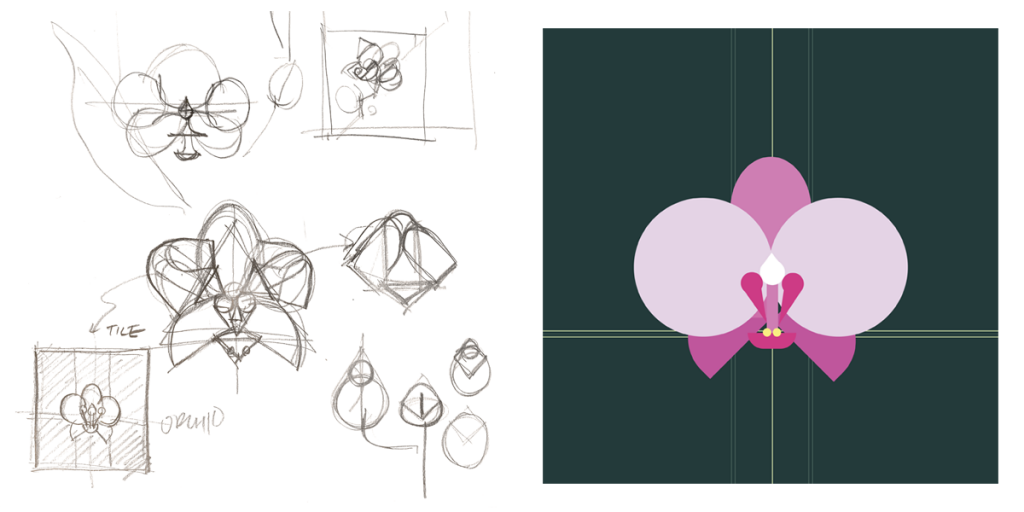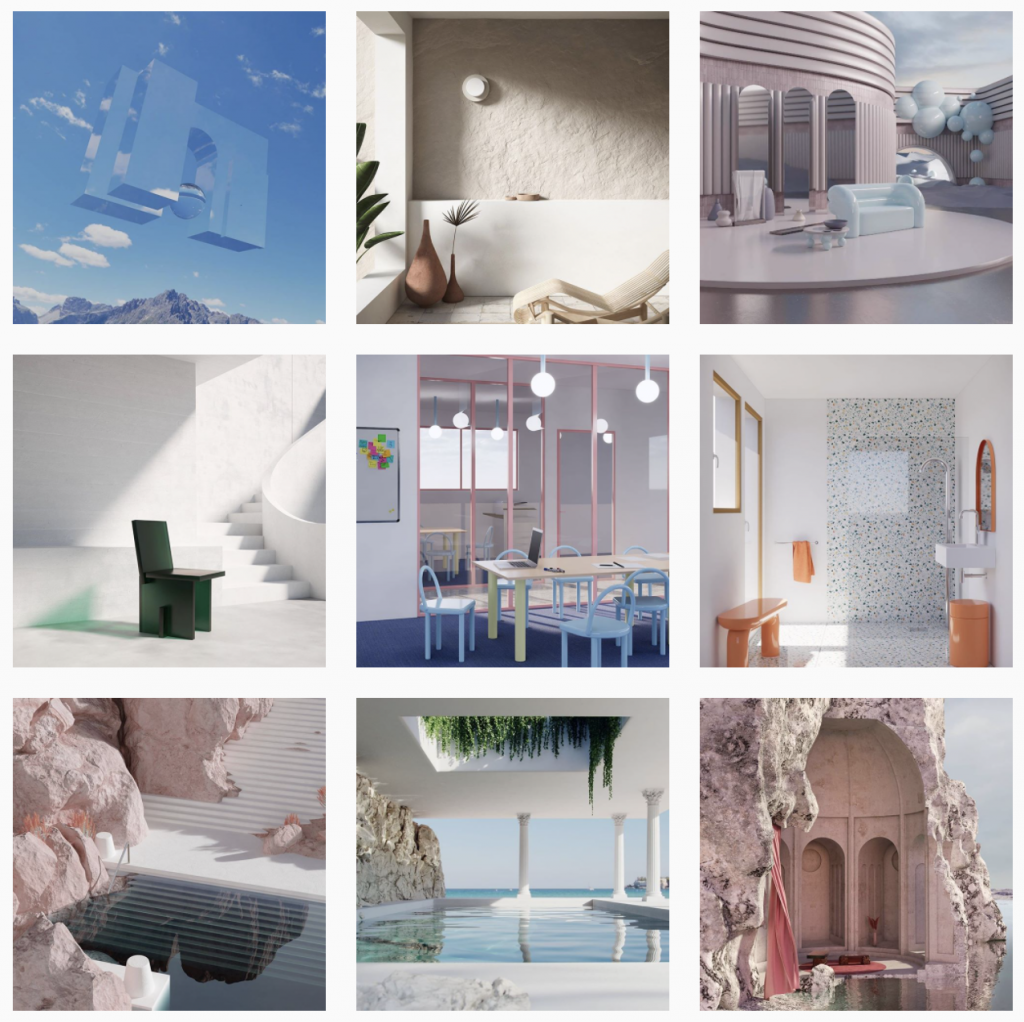I thought it would be an interesting exercise to simplify the intricate orchid flower with code. It was a fun challenge determining the most essential shapes out of the organic form. After getting the basic shapes down on paper, I made a sketch in Illustrator, then translated it into p5.js coordinates to create a “tile.” I then used loops to create a wallpaper out of the original tile design.
orchid et
function setup() {
createCanvas(600, 600);
}
function draw() {
background(200);
scale(.2);//scale down coordinates based on 600x600 canvas
for (var x = 0; x <= 5*width; x += 600) {
for (var y = 0; y <= 5*height; y += 600) {
push();
translate(x, y);
tile();
pop();
}
noLoop(0);
//}
}
}
function tile() { //use repeating tile to simplify loop function
noStroke();
fill(35, 58, 58);//bg dark green color
rect(0, 0, 600, 600);
//decorative lines
stroke(227, 239, 177); //yellow line
line(0, 399, 600, 399);
line(0, 407, 600, 407);
line(300, 0, 300, 600);
stroke(115, 140, 127); //green line
strokeWeight(0.5);
line(0, 403, 600, 403);
line(250, 0, 250, 600);
line(255, 0, 255, 600);
line(350, 0, 350, 600);
line(355, 0, 355, 600);
push();
orchid();
pop();
}
function orchid() {
noStroke();
push();
fill(206, 126, 179); //midtone magenta
ellipse(300, 240, 107, 142); //back petal
fill(191, 86, 156); //darker magenta
translate(-165, 310);
rotate(radians(-45));
rect(180, 312, 115, 76, 60, 0, 0, 0);
pop();
push();
fill(191, 86, 156); //midtone magenta
translate(340,-115);
rotate(radians(45));
rect(305, 312, 115, 76, 0, 60, 0, 0);
pop();
push();
fill(228, 211, 229); //light magenta
ellipse(212, 315, 183);//large petal1
ellipse(388, 315, 183);//large petal2
pop();
push();
fill(206, 126, 179); //midtone magenta
rect(292, 329, 16, 80);//center rectangle
pop();
push(); //top "sandle"
fill(255); //white
ellipse(300, 320, 33);
triangle (300, 295, 317, 315, 283, 315);
fill(205, 59, 113); //true magenta
ellipse(273, 335, 24);
triangle(264, 343, 278, 343, 295, 387);
ellipse(327, 335, 24);
triangle(336, 343, 322, 343, 305, 387);
rect(268, 401, 64, 21, 0, 0, 21, 21);
fill(249, 239, 130);//yellow
ellipse(293, 400, 11);
ellipse(307, 400, 11);
pop();
}
![[OLD FALL 2020] 15-104 • Introduction to Computing for Creative Practice](../../../../wp-content/uploads/2021/09/stop-banner.png)



